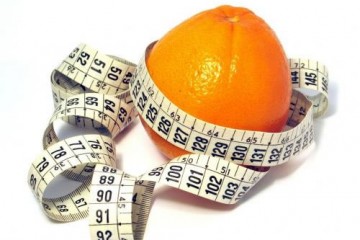How to Lose Weight in 3 Weeks
Everyone who sets out to lose weight wants to see an immediate result, but the weight didn’t appear overnight, and it won’t disappear that way either. Patience is the key, but if you follow a strict regimen regarding your diet and exercise routine, you can safely expect to lose an average of between one and five pounds per week during the first three weeks of your weight-loss efforts.[1]
Steps
Part 1 Making Changes to Your Diet
- 1 Skip fad diets. Fad diets may lead to some immediate results, but they’re rarely healthy, and the results never last.[2] Fad diets typically mean a gimmick that doesn’t include a well-balanced diet. You miss out on key nutrients over the course of the diet. Most people immediately put the weight back on after concluding the fad diet as well.[3]
-
2
Cut calories. The simple act of burning roughly 500 more calories per day that you take in can lead to a loss of 1-2 pounds over the course of a week.[4] By counting calories, you can more accurately compare how many you take in on a daily basis versus how many you burn while exercising.
- There is a limit to how many calories you can cut safely, though. For instance, if you plan to exercise for one hour per day to see quick results, you should still eat between 1,050 and 1,200 calories per day and no less.[5] For comparison purposes, most daily values are based on a 2,000-calorie per day diet.
-
3
Focus on healthier dining options. To see quick results in a healthy manner, focus on foods like fruits, veggies, egg whites, soy products, skinless poultry breasts, fish, shellfish, nonfat dairy foods, and 95% lean meat.[6] A good variety of these options will help you maintain nutrients while cutting out unnecessary starches, sugars, and animal fats.[7] Seems simple, but it’s easier said than done.
- Most serving suggestions will be based on a 2,000-calorie per day diet. However, to see fast, safe results with your weight-loss efforts, you should tailor your calorie intake based on your exercise regimen. Never drop below the daily calorie intake highlighted in Step 2.
-
4
Control portion sizes. Some people mistakenly believe that eating too much of healthy options is still healthy. Even when eating well, you still need to control portion sizes. To get a better idea of correct portion sizes when talking about a “serving size” of healthy options, consider the following.[8]
- A cup of fruit should be no larger than your fist.
- An ounce of meat of cheese is about the size of your thumb.
- Three ounces of meat, fish, or poultry is about the size of the palm of your hand.
- 1-2 ounces of nuts equals about the amount that fits in one cupped hand.
-
5
Cut out snacks and sweets. Unnecessary snacking and sugary drinks are the sources of more daily calories than most people realize. Cut out as many of these as possible. Sadly, this also means desserts.
- If you do need to snack, have vegetables instead of sweets.[9]
- Actively try to eat only from a plate at the dinner table whenever possible. Mindless snacking in front of the refrigerator or on the couch adds up.[10]
-
6
Drink lots of water. You can cut out plenty of calories each day by replacing caloric drinks with water. In addition to keeping you hydrated, drinking lots of water can also help you feel full, which will cut down on snacking and other habits that way curb your weight-loss progress.[11]
- This includes alcoholic beverages as well, which often average even more calories than soft drinks.[12]
- The myth of eight glasses a day is not true.[13] You don’t need to bloat yourself on water for it to help with your efforts.
Part 2 Increasing Exercise
- 1 Exercise for an hour per day. The type of exercise you do and how hard you push yourself will depend upon how active you are before beginning your efforts. However, you should aim to exercise for an hour per day.[14] You’ll quickly see a different in how hard you can push yourself by keeping up a daily regimen.
- 2 Minimize strength training. While strength-training regimens are an important part of a fitness routine, they don’t lead to the calorie burning you want for fast results.[15] Some people think that more muscle mass means more calories burned, but the amount is negligible at best—approximately 5-10 extra calories burned per day for every pound of muscle gained.[16]
-
3
Maximize cardio. When it comes to burning lots of calories fast, cardio is your friend. You don’t have to push yourself to the extreme for the entire hour of exercise, though. For the best results, try to break a sweat during your warm up, then keep yourself sweating for the entire hour.[17]
- If you have a chronic condition or a lot of weight to lose, check with your primary care physician before taking on a serious physical exercise routine.[18] Ensure that your physician thinks you’re healthy enough for the activity.
-
4
Vary your exercises. An hour per day is a great way to burn out on a single exercise. The key to maintaining is to vary your exercise routine enough to keep it interesting.[19] Running either on a track or treadmill is a great way to burn calories, but it’s also high-impact on the joints, and other cardio exercises can offer a more full-body exercise of the main muscle groups. Consider also trying these other exercises that burn roughly 600 calories per hour in the target MHR:[20]
- Cycling
- Rowing
- Swimming
- Jumping rope
- 5 Use a heart monitor. To maximize gains (or losses as it were), keep your heart rate in the right range for as much of the exercise as possible. This range is considered between 55-80% of your maximum heart rate (MHR).[21] You can determine your MHR by subtracting your age from 220. Multiply this number by 0.55 and 0.8 to find the range.[22] Use a heart monitor to gauge if you’re staying in this range during your exercise.
-
6
Try interval training. Interval training refers to the process of alternating between high-intensity bursts and more moderate intensity throughout the routine.[23] When using a heart monitor, you can easily introduce interval training by pushing yourself from the low end of your target range toward the higher end for several minutes at a time.
- Building stamina for interval training takes time. Begin slowly with fewer high-intensity bursts with a shorter duration.[24] The emphasis should always be on safety, so don’t overdo it.
-
7
Log your steps. You’ll be much more likely to maintain your workout routine if you schedule and log your daily workouts.[25] Looking back at the number of hours you’ve logged at the end of each week will also motivate you to keep going.
- Weigh yourself daily as part of your log as well. You’ll feel even more motivated once you start seeing results on the scale.
Part 3 Making Lifestyle Changes
- 1 Clean out the fridge. You’ll have an easier time avoiding sugary snacks and other junk food if you don’t keep it in the house to begin with. Clean out your refrigerator and pantry to cut down on any temptations.
- 2 Stay busy. To reduce the risk of snacking and other counterproductive activities, stay busy even when you’re not exercising.[26]
- 3 Eat at home more. You’ll have a much more difficult time controlling your calorie intake if you eat out all the time. Cook at home where you can control the portion size and exactly what goes into the preparation of meals.
- 4 Get 7-8 hours of sleep each night. In addition to eating well and exercising, sleep is beneficial to your metabolism. You’ll naturally be tired while burning more calories than you take in each day as well. Give your body the rest it needs to maximize your results.
-
You Need More Sleep
-
How to Use Whey Protein
Proteins are made up of amino acids and are the basic building blocks
-
9 Slimming Food Swaps To Prevent Summer Weight Gain
Its hard to enjoy a summer excursion without being bombarded by high-c
-
The Single Best Thing You Can Do For Your Health!
What’s the single best thing you can do for your health?
-
10 minute AB Workout to get a flat stomach
We all can squeeze our busy schedules and make room for this e
-
How to Burn 20 Pounds Fast
Losing weight can be a long process — especially if you have more tha
- DON'T MISS
- 8 Ways To Keep Your Skin Firm As You Shed Pounds
- 12 Ways To Lose Weight Without Dieting
- Proven Weight Loss Ideas That Will Give You Your Dream Weight
- How To Shrink Your Weight: Tips And Tricks
- Eight causes of overeating
- Biggest Loser 10 Starts Tonight
- 10 Ways To Speed Up Your Metabolism In Just One Day
- Slim Down And Change Your Outlook On Life
- A Calories Just A Calorie... Right?!
- How To Lose Extra Weight - Secrets To Lose Extra Weight Naturally




